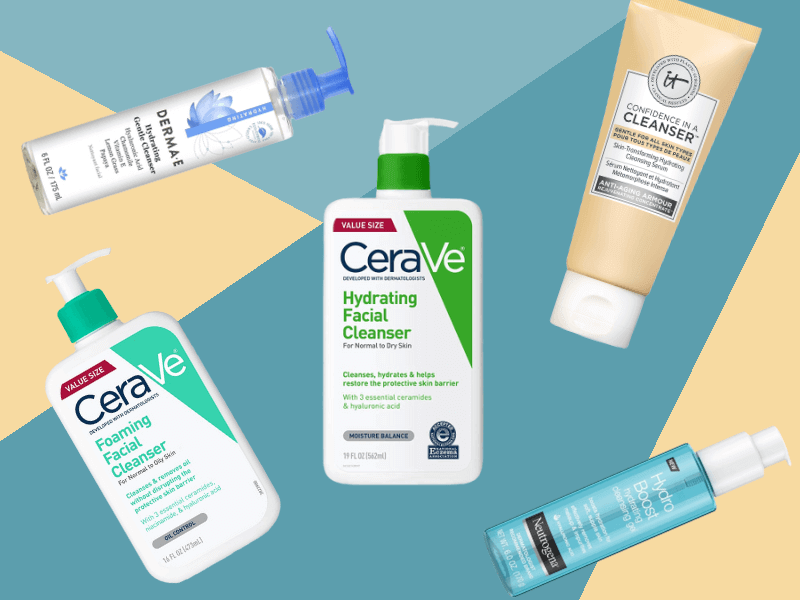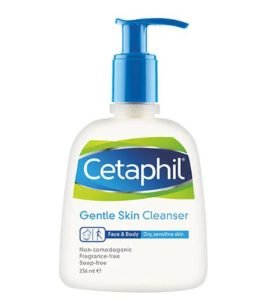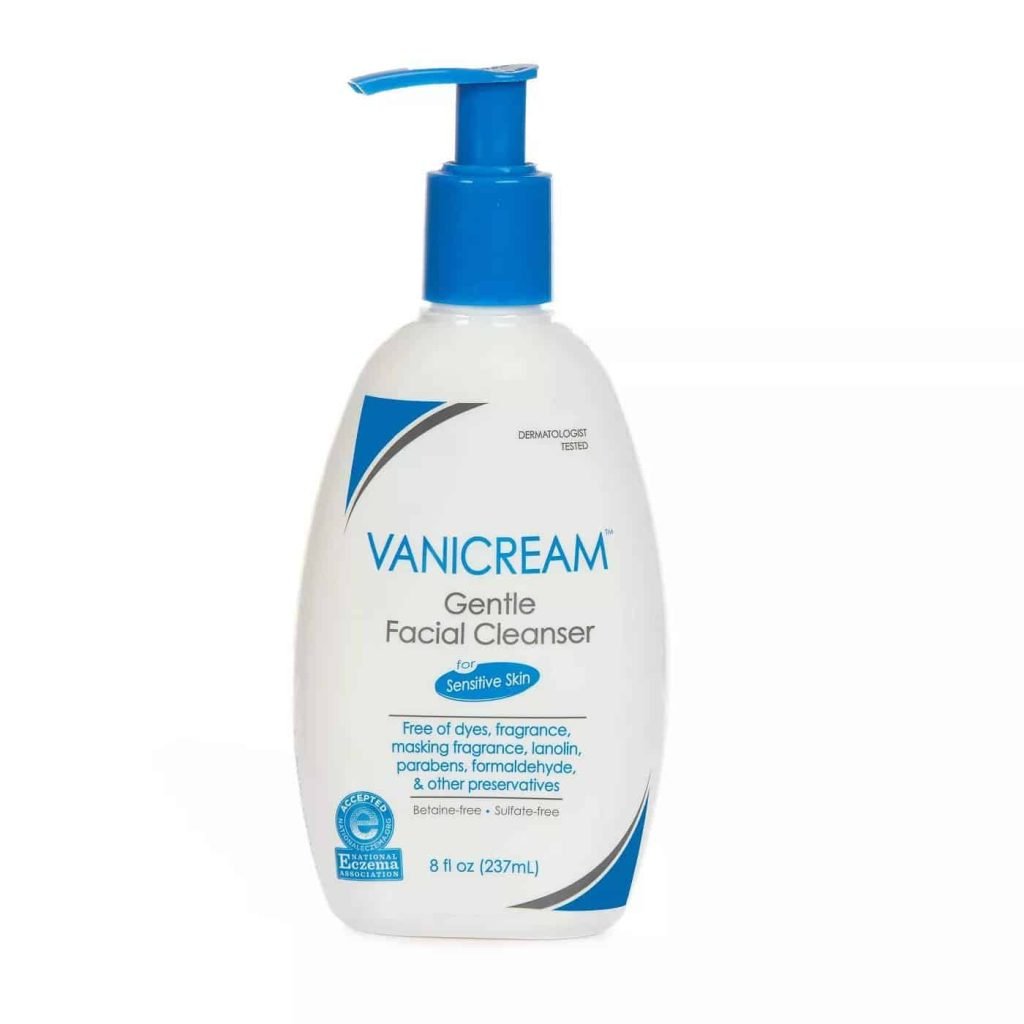/
PUBLISHED ON 2023/12/02 at 1:02 AM
The Best Cleansers For Milia, Tested & Reviewed
We independently evaluate all recommended products and services. If you click on links we provide, we may receive compensation.

Are you tired of waking up to those stubborn, tiny white bumps known as milia?
It’s frustrating trying to find a good cleanser to get rid of them without causing more trouble. Milia can be a real pain, and regular cleansers don’t always do the trick. That leaves us stuck, searching for something that works and is gentle on our skin.
But don’t worry! In this guide, we’ve looked into skincare to find cleansers that work against milia. We’ve tested and reviewed them, so you can stop worrying about those annoying little bumps.
These cleansers are here to help you say goodbye to the struggle and hello to clear, happy skin. Let’s check out the solutions that can make your skincare routine easier and leave Milia troubles behind.
We have listed these cleansers with the help of our skincare experts and team who have three years of experience in the field. We have analyzed the ingredients, and how they react with the skin and tested each product before listing it for you.
What Is Milia?
Milia are small, white bumps that appear on your face, especially around the eyes, nose, and cheeks. They are not acne, skin tags, or warts, but tiny cysts that form when dead skin cells get trapped under the skin. They are not harmful or contagious. But they can be annoying and hard to get rid of.
If you have ever wondered what causes milia and how to treat them, you are not alone. Many people struggle with this common skin condition and look for ways to prevent and remove them. In this article, we will explain everything you need to know about milia, including:
- What causes milia and who is more prone to them
- How to prevent milia by exfoliating regularly with the right products
- How to treat Milia at home or with professional help
- The best cleansers for Milia that we have tested and reviewed
By the end of this article, you will have a better understanding of Milia and how to deal with them effectively. Let’s get started!
What Causes Milia and Who Is More Prone to Them?
Milia are caused by keratin buildup. Keratin is a protein that makes up the outer layer of the skin. When keratin gets trapped under the skin, it forms a hard, white bump called a milium. Each bump is about 1-2 mm in size and can contain one or more milia.
Milia can occur at any age, but they are more common in newborns and older adults. Newborns have immature skin that is more prone to keratin buildup. Older adults have slower skin cell turnover and more sun damage, which can also lead to keratin buildup.
Milia also known as milk spots can appear anywhere on your face, but they are most often found around the eyes, nose, and cheeks. These areas have thinner skin and more oil glands. This is why they are prone to clogged pores that trap keratin.
Milia are not related to diet, hygiene, or genetics. They are not a sign of infection or disease. However, some people may have more sensitive skin or use products that can aggravate milia.
How to Prevent Milia by Exfoliating Regularly with the Right Products?
The best way to prevent milia is to exfoliate regularly. Exfoliation helps remove your dead skin cells and unclog the pores. It also improves skin texture and tone, and reduces the appearance of dark spots and acne scars.
There are many types of exfoliants, but the most effective ones for milia are acids. Acids dissolve the bonds between dead skin cells and help them shed faster. They also penetrate deeper into the pores and break down keratin.
There are two main types of acids:
- Alpha hydroxy acids (AHAs) and
- Beta hydroxy acids (BHAs).
AHAs include glycolic acid, lactic acid, and citric acid. They work well for dry and sensitive skin types. They also hydrate and brighten the skin.
BHAs include salicylic acid and azelaic acid. They work well for oily and acne-prone skin types. They also reduce oil production and inflammation.
The best milia cleansers contain AHAs and BHAs, as they provide both gentle and deep exfoliation. They also contain other ingredients that soothe, moisturize, and protect your skin.
To use an acid cleanser for milia prevention, follow these steps:
- Wet your face with lukewarm water
- Apply a small amount of cleanser to your fingertips or a cotton pad
- Gently massage the cleanser onto your face in circular motions
- Avoid rubbing or scrubbing too hard
- Rinse off thoroughly with lukewarm water
- Pat your face dry with a soft towel
- Apply a moisturizer suitable for your skin type
- Use sunscreen daily to protect your skin from sun damage
You should use an acid cleanser once or twice a week, depending on your skin sensitivity and tolerance. You may experience some tingling or redness at first, but this should subside as your skin gets used to it. If you experience any burning, itching, or peeling, stop using the product immediately and consult a dermatologist.
How to Treat Milia at Home or with Professional Help
If you already have milia on your face, you may be tempted to pop or squeeze them out yourself. However, this is not recommended. It can cause infection, scarring, or bleeding. Milia are not like pimples that have a head or a pore that can be easily opened. Milia are enclosed under your skin and require a sterile needle or a comedone extractor to pierce and remove them.
The safest and most effective way to treat milia is to consult a dermatologist. A dermatologist can perform one of the following procedures to remove milia:
Manual extraction: Involves using a sterile tool to pop out milia. Quick but may cause pain and bruising, less effective for deep milia.
Chemical peels: High acid application to shed milia and improve skin. But may lead to irritation and peeling. It requires aftercare and sun protection.
Laser therapy: Uses focused light to vaporize milia, enhancing skin, but can be painful and may need multiple sessions and sun protection.
These treatments can be effective. But consider their risks, and costs, and discuss with a dermatologist for the best choice. You might want to see How to Get Rid of Milia: 7 Ways
Our Top Picks
The Best Cleansers for Milia That We Have Tested and Reviewed
We have tried many cleansers for milia over the years, but only a few have impressed us with their results. These are the cleansers that we have tested and reviewed based on their ingredients, performance, price, and user feedback. Here are our top picks for the best cleansers for milia:

What We Like
- It effectively eliminates makeup and extra skin oils without causing dryness.
- Free from dyes, fragrances, lanolin, parabens, and formaldehyde.
- It won’t clog pores and is also gluten-free.
What We Don't Like
- There are no downsides to this product
This oil-free cleanser is ideal for milia-prone skin. It’s simple with minimal ingredients and offers several benefits. It effectively removes makeup and excess skin oils without causing dryness.
What We Like
- Eliminates impurities and reduces excess oil
- Do not over-dry the skin.
- Includes desert plant extract and lemon fruit extract.
What We Don't Like
- The presence of lemon fruit extract might be a concern for individuals with sensitive skin types.
This foaming face wash is designed for oily and sensitive skin, making it safe for those prone to milia.

What We Like
- Shields the skin from dryness, irritation, and a compromised skin barrier.
- Effectively cleanses dirt, sunscreen, makeup, and impurities.
- It is non-comedogenic, hypoallergenic, and free from fragrance, soap, parabens, and sulfates.
What We Don't Like
- Nope, all clear here!
If you have milia-prone skin, consider using Cetaphil cleanser. It’s straightforward and lacks mineral or essential oils.

What We Like
- Gently removes dead skin cells,
- Includes glycolic acid, an exfoliating agents
What We Don't Like
- It may not be suitable for sensitive skin.
This cleanser contains polyhydroxy acid (PHA), which is a milder form of AHA that exfoliates without irritating the skin. It also contains maltobionic acid, which hydrates and repairs the skin barrier. It has a gel-like consistency that glides smoothly on the skin and rinses off cleanly.

What We Like
- Unclogs pores, and reduces blackheads and blemishes.
- It contains green tea extract, which soothes and protects the skin from free radicals.
What We Don't Like
- None
This is not a cleanser per se, but a toner that you apply after cleansing with a cotton pad. It contains 2% salicylic acid, which penetrates deep into the pores and breaks down keratin plugs. It has a watery consistency that absorbs quickly into the skin without leaving any residue.
How We Researched and Tested
When it comes to skincare, especially for conditions like Milia, the right choice of cleansers can make all the difference. We understand the importance of this decision, and that’s why our selection process is rigorous and thorough. Here’s a breakdown of how we went about it:
1. Our Background in Skincare:
With 3-4 years of experience diving deep into the world of skincare, we’ve cultivated a keen understanding of what works and what doesn’t. Our team is well-versed in analyzing ingredients, understanding skin reactions, and recognizing the signs of a genuinely effective product.
For best results, pair these with the The best moisturizers for milia-prone skin
2. Hands-On Testing:
We believe in the power of firsthand experience. Members of our team, familiar with the nuances of Milia personally tested a range of cleansers. This allowed us to assess not just the immediate effects but also how these products performed over time.
3. Expert and Dermatologist Reviews:
We didn’t just rely on our own experiences. We delved into reviews and recommendations from skincare experts and dermatologists. Their insights, combined with our own, ensured that the products we recommend are backed by professional knowledge and expertise.
4. Comprehensive Research:
Every cleanser that made it to our list has been thoroughly researched. We looked into their ingredients, their formulation, and how they interact with the skin, especially skin affected by Milia.
5. User Reviews and Feedback:
Beyond experts, the experiences of everyday users like you are invaluable. We scoured user reviews, feedback, and testimonials to understand how these moisturizers performed in real-world scenarios.
By combining our expertise, hands-on testing, expert insights, thorough research, and real user feedback, we’ve curated a list of cleansers that we believe are the best for Milia. Our commitment is to provide you with choices that are effective, safe, and worthy of your trust.
What should You Be Aware Of When Dealing With Milia?
We have listed some of the best cleansers for milia that we have tried and loved. They have helped us get rid of those pesky spots and achieve smoother and clearer skin. However, keep in mind that exfoliating too much or too harshly can damage your skin and cause more problems. Always follow the instructions on the product label and use sunscreen daily to protect your skin from sun damage.
If you have severe or persistent milia, you may need to consult a dermatologist for professional treatment. Some of the options include manual extraction, chemical peels, or laser therapy. These procedures can help remove milia faster and more effectively than home remedies, but they can also have some risks and side effects. Therefore, you should weigh the pros and cons of each option and discuss them with your dermatologist before deciding on the best treatment for you.
Wrapping It Up!
Milia is not a serious skin condition, but it can be a cosmetic issue for some people. The good news is that there are many ways to prevent and treat them at home or with professional help. The key is to exfoliate regularly with the right products and ingredients, and to take good care of your skin. With patience and consistency, you can get rid of milia and enjoy smoother and more beautiful skin.
We hope this article has helped you understand milia better and how to deal with it effectively. If you have any questions or comments, feel free to leave them below. We would love to hear from you!
Thank you for reading and happy exfoliating!



